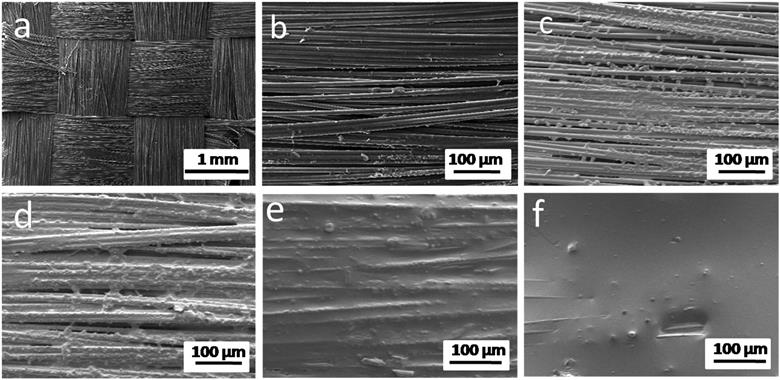Chinese scientists have used conducting carbon nanotubes and impact-responsive polymers to create a smart Kevlar composite with enhanced ballistic and stab resistance. Body armour made from this material could sense the force and location of impacts, and detect when it has been pierced.
Flexible, lightweight and durable, Kevlar has been a key component in personal armour for decades. It has excellent stab and cut resistance, making it the primary component in police stab vests, also offering limited protection against small arms fire.

Source: © Royal Society of Chemistry
Scanning electron microscopy images showing regular Kevlar (a, b) and the improved version with different shear-stiffening polymer/Kevlar ratios (c: 4.8 weight% polymer; f: 84 weight% polymer)
The problem with Kevlar’s flexibility is that when it stops a bullet, the energy is still transferred directly to the wearer at the point of impact, which causes trauma – imagine being punched at the speed of a bullet! For military applications, where Kevlar would not stand up to high-velocity rifle rounds, it is often combined with heavier steel or ceramic plates to spread the impact over a larger area.
Read the full story by Will Bergius in Chemistry World.
This article is free to access until 17 May 2017.
S Wang et al, Soft Matter, 2017, DOI: 10.1039/c7sm00095b










